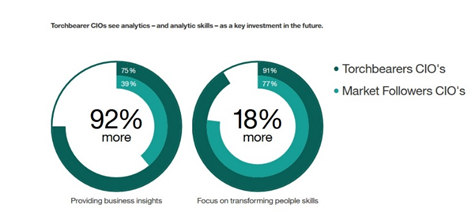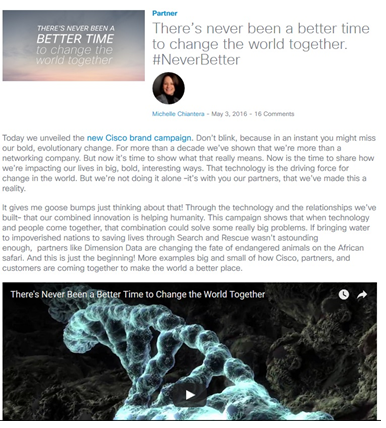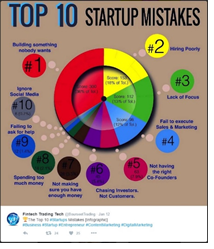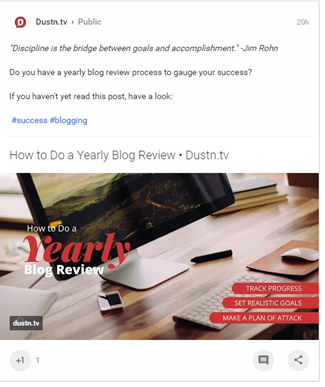March 4, 2024 | Digital Strategy | SEO Content |
Can you engage technology buyers with content? The answer is a resounding yes, you can! Companies attract buyers with content all day long, using blogs on their website and social media, but the million-dollar question is how.
With the rise of social platforms and mobile devices, you may think skipping the process of blogging on your website is a good idea. If your audience is all on social media, you're already giving them all they need to know, right?
Wrong.
Many businesses, especially those that are targeting technology buyers, believe their social media presence alone will constitute their product or service content. Some even believe there won’t be a need for websites or blogs in the future. This ideology overlooks the main benefit of having a blog and tying it back to your social platform.
Let's start with the blog. There are a plethora of reasons why tech companies – in fact all companies – should be blogging. Let’s look at the numbers:
Why is everyone producing so much content? It's very simple - people want content! Look at social media. First, people are sharing information and ideas on social media everyday - there are 2.78 BILLION active social media users as of 2017. These people are using social media to engage with each other and are sharing articles that reflect their interests and points of view.
From a digital strategy, these billions of active users are reading everything imaginable - from news, to gaming, entertainment and even things related to business. Users can spend hours on social platforms:
Secondly, when people have questions, they go online to seek answers. Consumers, businesses, and even experts often use the Internet to discover solutions to their business challenges. Why? Because they expect these answers to be online and as the above shows, millions and millions of expert driven blogs are posted and shared every day.
This is why you want to blog on a regular basis - you have an expert point of view that you want to share with your audience.
As a company, just posting a image of a product or a service doesn't cut it on social media. BUT if you maintain a relevant blog targeted to your audience and you post an image on said blog, you'll get more people interested in clicking it. That will then lead them back to your website. They might save the link to return to later, once their workday is over or once they are able to get a free moment.
This is why you blog regularly.
55% of business bloggers get 5% or more of their website traffic from their blogs
In the last few years, the idea that content is a business’ strongest selling point has grown. Back in 2011, 56% of the sales cycle was just engaging with potential and current customers through content, with only 21% talking with salespeople. Social media is a great place to share your content, as readers are also likely to share your posts with their colleagues, executives, and others in their industry.
Content is still the king. The numbers below show you why –
That last one should grab you – as mentioned above, blogs can lead your customers back to your website. That should be the number one reason for your company to blog regularly – blogs drive traffic to your website. Search engines, especially Google, love websites that have updated, curated, and valuable content and they reward sites with such content with higher ranking. This is part of what makes search engine optimization (SEO) and why your blog needs to be PART OF your website and not externally hosted.
Search engines, especially Google, love websites that have updated, curated, and valuable content and they reward sites with such content with higher ranking.
The reason? You lose the digital magic of engaging on social media when your blog is separated from your website. Social media has the lowest cost per click when it comes to advertising versus any other platform. You can grab your audience through social media, which drives them to your blog IN your website. A reader goes through your blog and, impressed with your thought leadership, begins to explore what else your company offers or goes directly to contacting your company to help with their business challenge.
When your blog lives off-site, users leave your blog without ever heading to your company website. This is especially true if you don't share your company information on social media. Users want immediate results and if needing to find out more about your company means doing a Google search, they are less inclined to do so. Or worse, a Google search may lead them to one of your competitors
Many tech companies engage their audiences through content, usually sharing their posts through social media. Here are two companies that are killing this:
IBM has done a fantastic job when it comes to engaging their technology buyers with their content. The company not only has to reach out to busy executives, but increasingly these buyers are from a generation that is not only used to having companies engage with them through social platforms, but they also expect it.
IBM has been concentrating on their content marketing to address this generation, showing them the power of their technology versus telling them about it; remember the old English adage of ‘show, don’t tell’?
One of IBM’s main focuses is to build customer relationships through their content, ensuring they are targeting content so their audience feels like they know the company and vice versa. The way IBM does this is through their content, most notably through their CIO insights site.

This site is geared towards members of the C-suite – leaders in organizations, such as the CEO, CIO, CFO, and others. These leaders are at the forefront of discovering what technology can do for them and their businesses and IBM has focused on these leaders to showcase how they are staying ahead of the curve in the “age of disruption”.
From key imperatives affecting the C-suite, with statistics and facts, to their featured video with different business executives, the site holds a giant resource of thought leadership, insights, events, and more. For even more engagement, the site is split up for each member of the C-suite because CEOs may not have the same challenges or see the same change in technology as the CIO or CFO. Each section, while following the same format, offers a different point of view for each C-suite member, including facts and statistics related to their area. This site, along with their social media engagement, has helped IBM position themselves to a new pool of business owners and users.
Another company that is using content to engage their buyers is Cisco. Cisco targets their content, like IBM, to specific audiences. For example, many of Cisco’s blogs are targeted towards the future of technology and how it can engage and empower businesses, their employees, and their customers. Cisco’s focus on digital transformation allows for their readers to learn where the company sees technology heading and how businesses can utilize it to become more agile and more competitive, and how partnering with cisco can help achieve these goals.

Their message of Better Together or #BetterTogether shows their readers that new opportunities can be reached when working together to embrace and expand those technologies.
First and foremost, your blog should showcase your thought leadership. When people search for content, they want the best information they can find, often seeking more than one answer to a specific challenge or ideas about current trends. Your blog is the first conversation a potential buyer has with your company. When seeking an answer to their question, your thought leadership and expert perspective might help answer that question or solve a business challenge. There are many ways to do this:

The image above is an example of an infographic shared by Fintech Trading Tech, a trading agency located in France, on their Twitter account. In it, they list the top ten mistakes people make when they try to create a startup business. Many of their posts include these infographics, images, and video gifs, showcasing their city, offices, upcoming events, and technology trends.
Here’s a post from Dustin.tv on Google+, using an image to highlight his topic of doing a yearly review of your blog.

Remember - your blogs should be relevant and simple, cutting to the heart of the matter that you want to address and that matters to your audience
If your company already has a blog on your website, that's great! Taking the time to go through your content will help in presenting the best material to your audience; even older content can be repurposed, especially if it's on an important topic or tend within your industry.
Remember, your blogs should be relevant and simple, cutting to the heart of the matter that you want to address. Don't make them too short, as that may not convey all the information you want. However, don't make them too long either - no one wants to feel like they're reading a dissertation. Instead, discover what others are doing for their blogs - while an actual average is still debated, the general consensus is that longer is better, especially for SEO.
If you don't have a blog on your website, now is the time to start implementing one. Writing is not everyone’s strong point, so while some people can write up several blog posts in a few hours, some people might take days or even weeks. Starting the blogging process can be handled in a few ways, from announcing a special event or information that is upcoming to introducing a new product to customers.
You can also hire a blog content team, such as the one we have at Change3, to handle these details, leaving you free to focus on what you do best: run your business. In the end, having a tech blog not only introduces you to a customer base that may not already know you, but also helps to position your company as a leader in your field. And when people discover your blog, they’re more inclined to continue reading via your website, boosting your overall web traffic.
Resources:
3 Reasons Why Your Tech Department Should Be Blogging
10 Reasons Why You Should Have an Active Business Blog
5 Reasons Why You Must Have a Blog for Your Startup
How IBM is Reaching the Next Generation of Technology Buyers
6 Content Ideas Every Marketer Should Steal from IBM
Recognizing Opportunity through Digital Transformation
7 Trends that Will Change Social Media in 2017
SEO: The Beginners Guide to Search Engine Optimization
Digital in 2017: Global Overview
Ultimate Guide on Hosting a Tweet Chat
Tell us your interests and preferred contact method below. Our team will reach out within 1-2 business days.